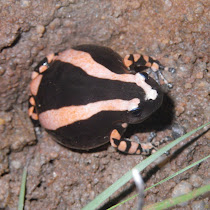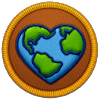
South African Frogs
The aim is to collect as many frog pictures in an area possible. Remember that our hands are full of bacteria. Handle the frogs as little possible and do not use strong soaps and hand cream before catching frogs with a net and a camera.
Read about frogs that you could possibly find in your target area. Load the sounds on your mobile phone to make identification possible. Some water boots may come in handy.
Be aware of crocodiles and hippo's. Rather go in groups when targeting a specific area.
Tip. The best time to go frogging is after the rain.
Follow your ears as the frog advertises their spots
Sign in to join mission

 Created by
Created by
Boswagter
6 participants
7 spottings
Frog numbers all over the world are busy declining. They respirate through their skin. Chemicals binds with the mucus on the frog's body, hampering breathing in the process.
As a result of their sensitive skins frogs tend to be more active from late in the afternoon until after midnight.
Frogs catch large amounts of insects and in that way help with pest control. They in turn are food for larger birds, snakes, spiders and other frogs. They need to lay large quantities of eggs to ensure that they have an offspring. They small eggs and tadpoles are predated on by birds, fish, spiders, crabs, dragonfly larva and water beetles.








